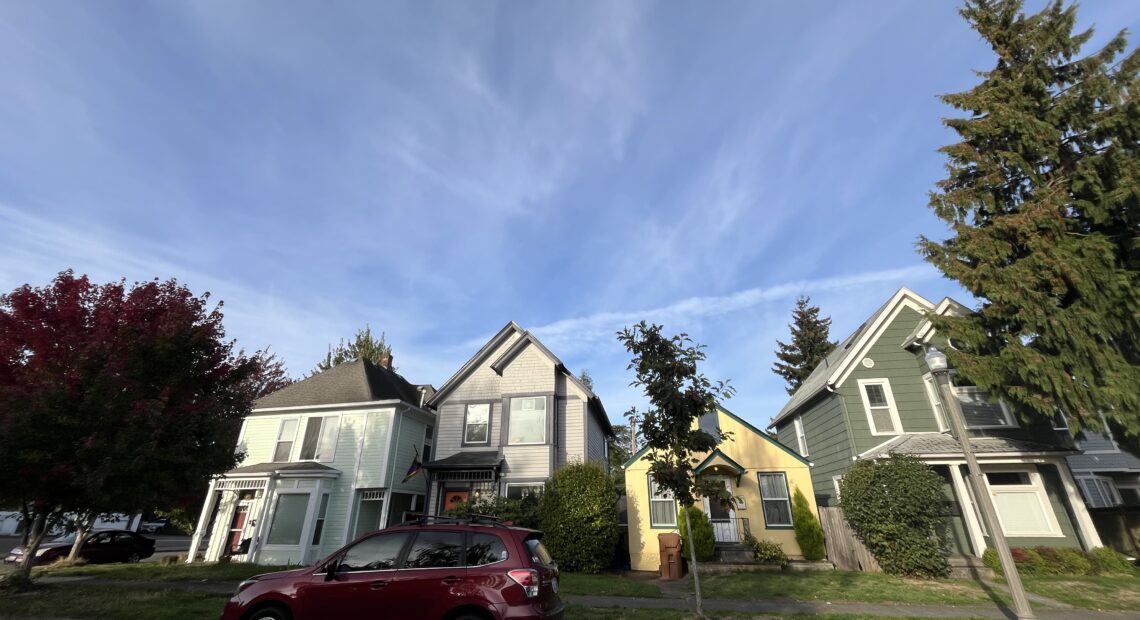
Tacoma City Council moves forward with zoning changes
Listen
(Runtime 0:57)
Read
The next phase of Tacoma’s attempts to address housing shortages will soon be implemented, as the Tacoma City Council has voted unanimously to adopt the second phase of the Home in Tacoma zoning package.
The package of changes to city zoning standards aims to create more opportunities for different types of housing across the city, including by allowing more units to be developed on a standard city lot.
Mayor Victoria Woodards shared her support of the ordinance in a statement after it passed.
“Affordable and accessible housing options are crucial for the well-being of our community, as it fosters economic stability, supports diverse neighborhoods, and enhances Tacoma’s overall quality of life,” Woodards wrote.
With passage of House Bill 1110, Washington state had already made it so mid-size and bigger cities had to allow for more housing units on lots. The work on Home in Tacoma started before that legislation passed, but some Tacoma residents are frustrated the city can’t first adjust to the state legislation, before it considers additional measures.
“It could have been started in stages,” said Cathie Urwin, a South Tacoma resident who doesn’t approve of the changes. “They didn’t have to go to this extreme.”
Urwin said she thinks the changes will increase housing development without increases in transportation and green spaces, posing equity problems to parts of the city that are denser. Urwin lives near the site being developed for a Bridge Industrial warehouse, a project many residents of Tacoma opposed because of it bringing more traffic congestion and loss of green space to a neighborhood which ranks lower on the city’s measures of health equity.
“My biggest concern is that somehow we are supposed to believe and trust the city that they will follow through and look out for the welfare of these people,” Urwin said.
Depending on what level a residential area is in, developers are allowed to build at least four, six or eight units on a lot. That threshold rises if property owners will make a certain number of the units affordable or if buildings are in major transit corridors.
Many think these incentives won’t equate to more affordable housing. Instead, they fear developers will build in more expensive neighborhoods and charge market-rate or higher rent prices to boost their incomes.
“I just find that there seems to be little motivation for developers to actually build affordable housing,” said Kimberly Vergez, who has lived in Tacoma’s historic North Slope neighborhood for five years.
Vergez said she has seen new development concentrated in areas away from transit services or businesses, posing problems for people who rely on public transportation.
Incentives that allow a developer to build more units if they keep some of the building affordable miss the mark, Vergez said, as most of the units won’t be affordable.
While she voted in favor of the ordinance, Council member Jamika Scott, who represents District 3, acknowledged she shared that concern in a statement.
“I am especially worried about whether Home in Tacoma will create more affordable housing or if it will simply encourage developers to create more luxury units that so many of our residents cannot afford,” Scott wrote.
Scott stated that she will be watching the ordinance’s implementation and adjust policy if needed.
The ordinance was amended a few times before adoption, and one of the biggest changes was removing regulations on large tree preservation.
“That change is really disappointing and it definitely signals that city council did not want the most controversial tree regulations to be part of Home in Tacoma,” said Lowell Wyse, executive director of the Tacoma Tree Foundation.
The City Council instead said they will consider tree preservation requirements citywide in order to have a broader impact than just the residential areas the Home in Tacoma ordinance addresses.
But without the bigger tree protections, Wyse and others expect there to be greater environmental impacts from more development meant to come from this ordinance.
This was a particular matter of concern to attendees of the council meeting when the vote was held. Tom Gitsky read a self-penned poem about this frustration to the council.
“Each of you, without exception, committed to tree protection. Yet when the time comes for action, you each tremble with reaction,” Gitsky read. “Not to those who gave you their vote, but to a few whose greed we note, the people do not understand how you can commit with one hand and decimate with other our discourse with one another.”
People say the residential areas are the city’s best bet for keeping existing large trees, which have been shown to have multiple environmental and health benefits.
Council member Sarah Rumbaugh introduced an amendment to the ordinance, making it so that trees 24 inches or more in diameter, based on a measure of the diameter from 4.5 feet off the ground, cannot be removed from a site unless keeping it would result in the dwelling being less than 15 feet wide, or if removal is needed to construct pedestrian access, utilities, retaining walls or similar structures.
“Home in Tacoma will radically enhance how our city reaches its 30 percent tree canopy goals by requiring tree planting as part of all new development and creating mechanisms to fund urban forestry across the city,” Rumbaugh wrote.
According to a city of Tacoma press release, Tacoma’s Planning and Development Services Department will facilitate a predevelopment pilot program from Dec. 1 to Jan. 31, meant to help applicants navigate the new regulations.
The new zoning regulations will officially take effect on Feb. 1.
















